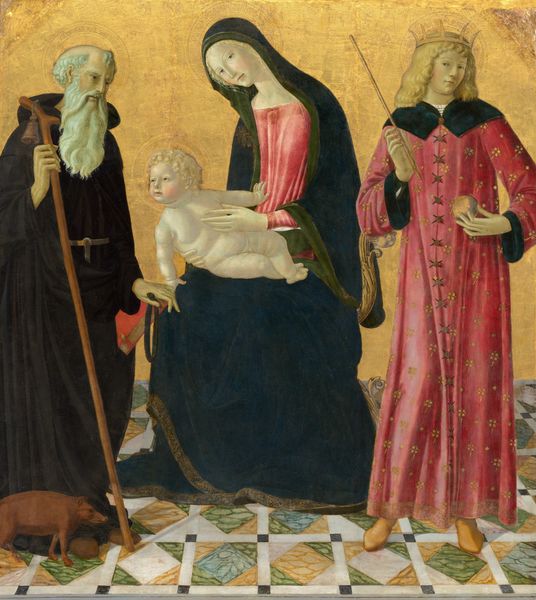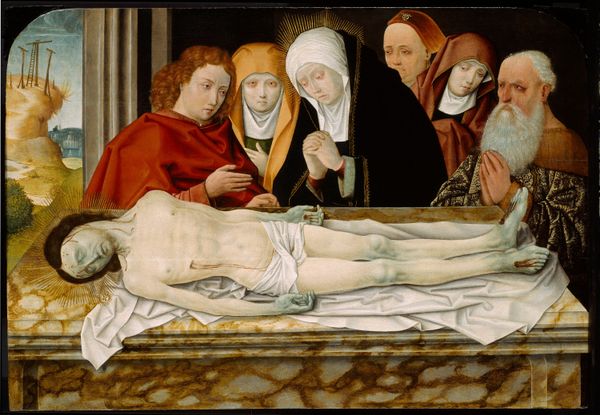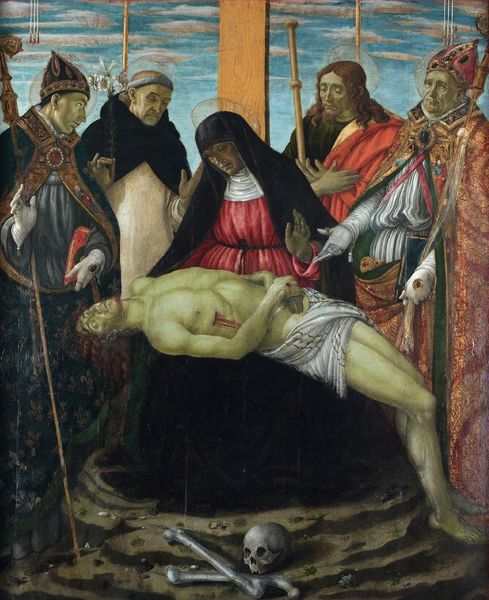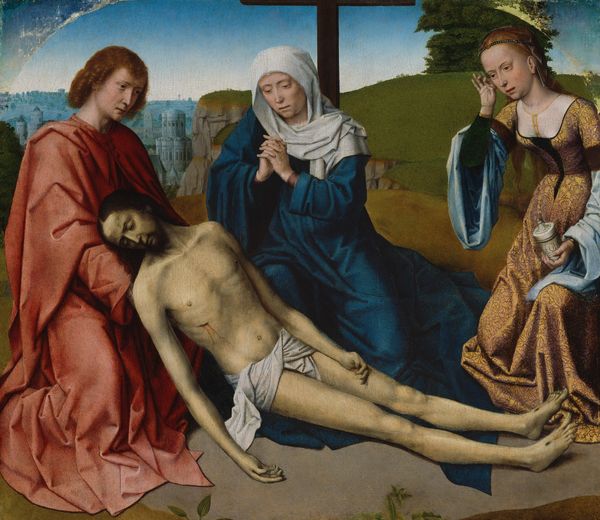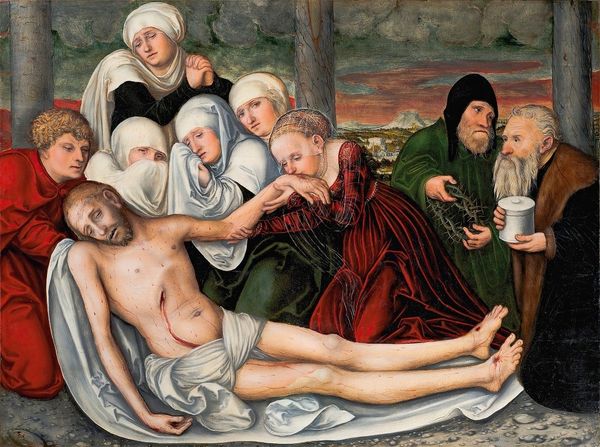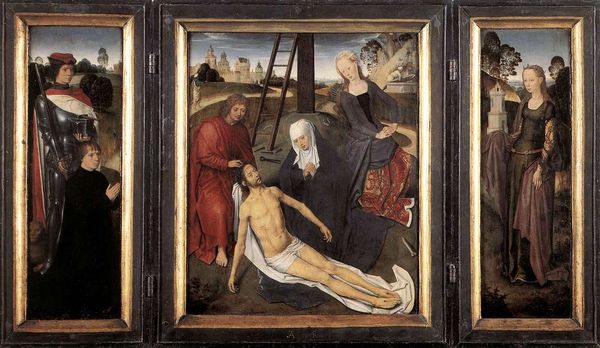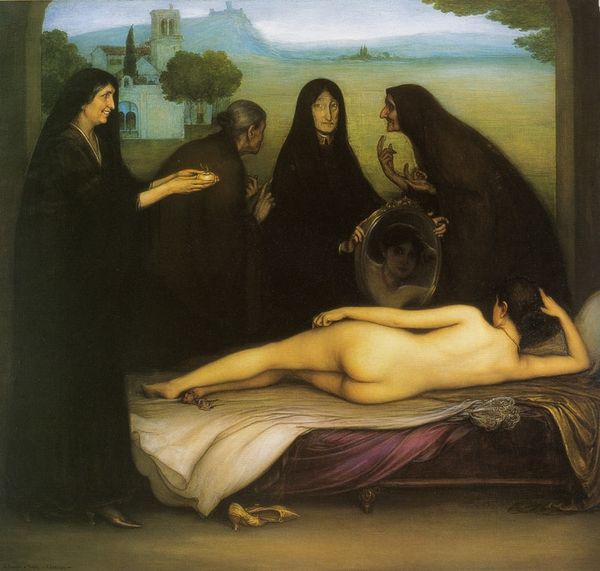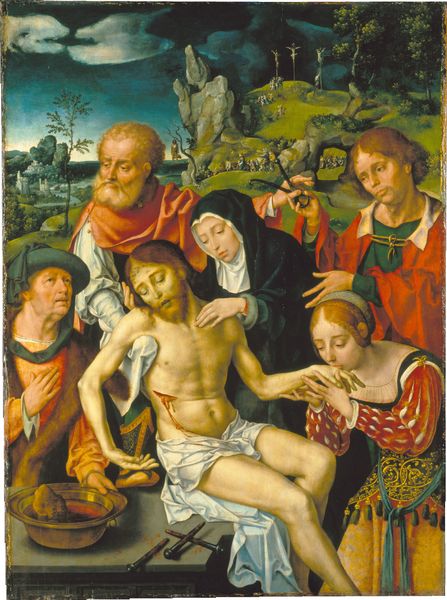
painting, oil-paint
#
portrait
#
medieval
#
allegory
#
painting
#
oil-paint
#
figuration
#
jesus-christ
#
group-portraits
#
christianity
#
history-painting
#
northern-renaissance
#
virgin-mary
Dimensions: 26 x 36 cm
Copyright: Public domain
Curator: Welcome. Here, we're looking at Petrus Christus's "The Lamentation," an oil-on-panel work dating to about 1455. It's part of the Metropolitan Museum of Art's collection. Editor: This hits you like a wave of sorrow. The subdued palette and the drained figures... it feels like grief made tangible. Curator: The work depicts the Virgin Mary mourning over the body of Christ, surrounded by other figures of grief, common to Northern Renaissance painting. It is a deeply religious scene reflecting the social and religious values of the time. Editor: The realism is intense, almost unsettling. Notice how pale Christ's body is. Then there's the raw pain etched on Mary's face – her collapse is echoed by everyone around her. But even in grief, there's a stylized beauty to the composition, a sort of serene acceptance? Or am I reaching? Curator: Not at all. Christus, situated between the artistic traditions of Jan van Eyck and the Italian Renaissance, merges detailed realism with an idealized composition. His placement of the figures and their emotional interactions offer an ordered portrayal of suffering. Editor: So it's like... organizing the chaos of grief into a formal structure? Is it almost like trying to make sense of it? Curator: Precisely. The art itself mirrors the historical context; this painting acted as a devotional object that had very structured meaning to the culture of the people at that time. Look how the faces, so carefully rendered, evoke specific reactions and pious contemplation for the contemporary viewer. Editor: Looking at their eyes… and the almost theatrical gestures, I get a sense of deep collective grief and of theater at once. It's beautiful but contained and slightly performed. Curator: You raise an important point. Works like these contributed to constructing models of emotional response and spiritual conduct during that time, showing the audience HOW to react to sacred and difficult matters. Editor: Okay, yes! You nailed it. And thinking of it now, seeing it in our very different time... I'm struck by the enduring human need to express such profound, shattering grief in something beautiful. Curator: A truly perceptive point. And in acknowledging that universal theme of suffering, perhaps we engage with more than just history here but with enduring humanity.
Comments
No comments
Be the first to comment and join the conversation on the ultimate creative platform.



